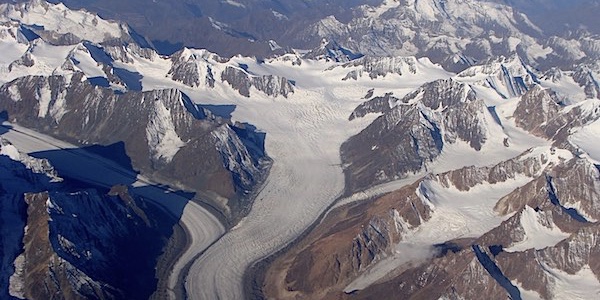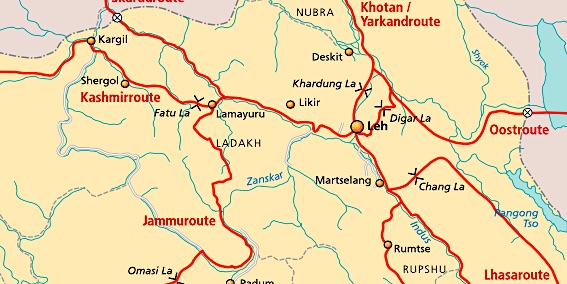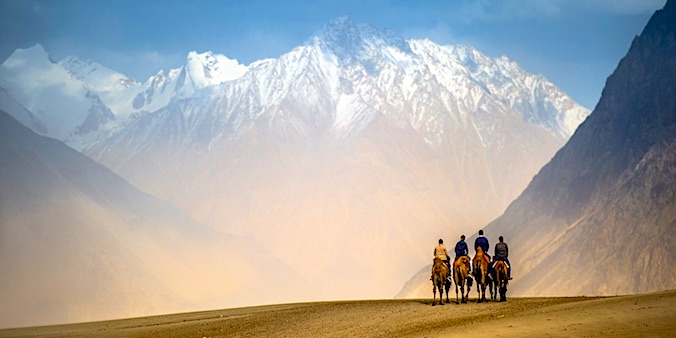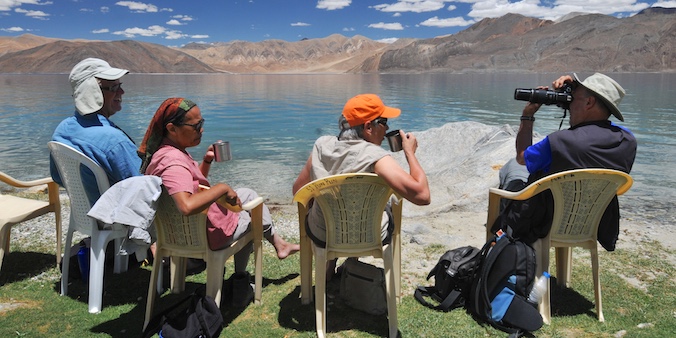LADAKH - NUBRA, SHYOK & PANGONG TSO
Tour - 6 days
NUBRA, SHYOK & PANGONG TSO
Tour - 6 days
About LADAKH
Ladakh is a part of the Indian Himalayas, located between the Kunlun mountain range in the north and the main Himalayas to the south. As it is the only Indian region that lies north of the Great Himalayan Range, it is very different from the rest of the Indian Himalayas. In many ways it resembles Tibet. Although part of India now, and earlier of the princely state of Kashmir, Ladakh has been an independent kingdom for almost 900 years.
Ladakh is best known for its Buddhist (‘Tibetan’) culture and its starkly beautiful mountain scenery. It is inhabited by a mix of Indo-Aryan and Tibetan people. Especially the latter, with their colorful Buddhist culture, have given the region the nickname of ‘Little Tibet.’
As a result of its location, in the rain shadow of the Great Himalayan Range, the climate is extremely dry. And due to the high altitude – most valleys are situated at 3300m or higher – winters can be extremely cold. Summers, however, are generally pleasant if not warm and sunny.
Read more…Read less…
Ladakh in the narrower sense is the Indus Valley with adjacent areas. It is bordered by two mountain ranges: in the northeast by the Ladakh Range, in the southwest by the Zanskar Range. The area around the capital Leh, and further upstream towards Tibet, is referred to as Upper Ladakh. Lower Ladakh is the area further downstream towards Kargil, where the Indus enters Pakistan.
The remoter areas of Zanskar, Nubra and Rupshu are now seen as regions of Ladakh. In the past, these areas were sometimes part of Ladakh, sometimes not. They can be visited from Leh by car or on foot. The latter, trekking, would be our advised means of transport. That is, if you are up to it. Because, while jeep trips in Ladakh are very rewarding indeed, trekking will give you an even more in-depth experience of the land and the people, with the added bonus of a total renovation of body and soul.
Ladakh can be reached by air or overland. On this tour, you fly in and out. In case you have enough time available, we strongly recommend taking one of the overland routes, in which you travel by train and car to Ladakh through Srinagar in Kashmir, Manali or Shimla, the latter two both in the Himalayan state of Himachal Pradesh. These are among the greatest car journeys in the world.
Region
Ladakh
(India)
Best Time
July - Sept.
No. Of Days
6 days
Trip Character
Jeep tour
Sleeping Altitude
3100 - 3700 m.
Price
INR XXX/ $ XXX
ABOUT THIS TOUR
YOUR custom-made TRIP
The tour described here, as well as the other ones on our website, are mainly meant as suggestions. We would be happy to offer you a travel proposal that fully meets your personal demands and expectations. That means that you choose where you want to go, what level of accommodation and type of transport you want and what activities you prefer.
Please let yourself be inspired by this and other trips on our website and then drop us a line (or call us) to explain your travel wishes. We will be happy to help you put together the perfect trip. You can reach us over e-mail, Messenger, Whatsapp or mobile phone.EXTENSIONS & VARIATIONS
Apart from the tour as described here, you could consider the following add-ons and changes:
- Explore the Shyok River further downstream in the direction of Pakistan. The road passes through magnificent gorges and while the vegetation gets more opulent as you are reaching lower altitudes the culture gradually changes from predominantly Buddhist to Muslim. You can travel up to the village of Turtuk where you can stay the night at a simple but decent tented camp.
- Spend one more day in Nubra on which you make a 5-hour walk to two small, hidden monasteries that rarely if ever see a foreigner coming.
- Do a trek in the Indus Valley (near Leh). For instance, the Chilling – Lamayuru trek. On this 4- or 5-day trek you sleep in trekkers tents while a walk-along cook prepares your meals. You walk 5-7 h per day, climb 600-1000m on two days but the rewards are great views and authentic villages. See here.
- Spend a day rafting on the Indus. There are different grades available, so there is the easy but fun to do level as well. Professional oarsmen will be with you in any case. You will be picked up from your hotel and dropped off there again at the end of the day, a pic-nic lunch is included.
ITINERARY
-
Day 1: Leh - Nubra (4 -5 h)
You leave the Indus Valley and cross the mountains of the Ladakh Range to Nubra, via the 5450m high Khardong La, one of the highest auto passes in the world. Just before the pass you get spectacular views of Leh and the Indus Valley. Altitude 3500 → 5450 → 3150m. -
Day 2: In Nubra
You’ll spend the whole day exploring the Nubra Valley. You can either do a camel ride and visits to the oldest monasteries of Nubra valley or go on a high mountain trail above the Nubra river to remote little gompas that even Lonely Planet has never heard of. Altitude 3100m. -
Day 3: Nubra - Shyok (4 h)
A thrilling jeep ride awaits you today, along the untamed Shyok river to Nubra. The road follows the beautiful valley, passing small hamlets of Ladakhi farms, crossing sand dunes and small side-rivers. Altitude 3100 → 3700m. -
Day 4: In Shyok
Today you'll be taken on village and nature walks near Shyok. You'll learn a lot about the Ladakh way of life and the Ladakhi flora and fauna. Altitude 3700m. -
Day 5: In Shyok, visit Pangong Tso
Famous Pangong Tso, located at 4400 m on the border with Tibet (China), is probably the largest high salt lake on earth. It is not only a spectacular lake, set amidst light-coloured mountains, but the route to the lake is beautiful too. Altitude 3700 → 4250 → 3700m. -
Day 6: Shyok - Leh (5 h)
Today you will return lo Leh, crossing the Ladakh Range again. This time you’ll do this via the 5360m high Chang La pass. Road conditions on the pass are bad but the views when coming down are worth it. You can visit two lesser known monasteries on the way. Altitude 3700 → 5360 → 3500m.
HIGHLIGHTS OF THIS TOUR

Flight to Leh
CARAVAN ROADS OF LADAKH


Khardong La
NUBRA VALLEY

SHYOK RIVeR LODGE





